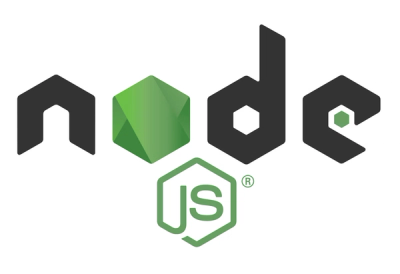
Security News
Django Joins curl in Pushing Back on AI Slop Security Reports
Django has updated its security policies to reject AI-generated vulnerability reports that include fabricated or unverifiable content.
A repository for Angular built around the rive canvas runtime.
Animations built before version 0.7.0 rive-canvas will not work with new versions of ng-rive.
| Angular | Rive-canvas | ng-rive |
|---|---|---|
| >14 | 0.7.* | 0.2.* |
| 12 | 0.7.* | 0.1.* |
| <12 | 0.6.* | 0.0.* |
npm install ng-rive @rive-app/canvas-advanced
RiveModule:import { RiveModule } from 'ng-rive';
@NgModule({
declarations: [MyComponent],
imports: [
CommonModule,
RiveModule,
],
})
export class MyModule { }
|-- assets
| |--rive
| |-- knight.riv
If you want to change the path you can specify it with the RIVE_FOLDER provider:
import { RiveModule, RIVE_FOLDER } from 'ng-rive';
@NgModule({
declarations: [MyComponent],
imports: [
CommonModule,
RiveModule,
],
providers: [{
provide: RIVE_FOLDER,
useValue: 'assets/animations',
}]
})
export class MyModule { }
<canvas riv="knight" width="500" height="500">
<riv-animation name="idle" play></riv-animation>
</canvas>
Error: Can't resolve 'fs', add this in your package.json:"browser": {
"fs": false,
"path": false
}
The RiveCanvas loads a .riv animation file into it's canvas tag :
[riv]: The .riv file or it's name if in the asset. Full path is managed by the RIVE_FOLDER token.[artboard]: The name of the artboard to used. If not specified, the default one is used.[width]: The width of the canvas in pixel.[height]: The height of the canvas in pixel.[fit]: How the animation should fit inside the canvas.[alignment]: Where the animation should be positioned inside the canvas.[lazy]: If provided, the file will only be loaded when canvas is visible in the viewport.[viewbox]: Enable zoom in the canvas. Expect a string minX minY maxX maxY. Default 0 0 100% 100%.⚠️ The lazy input use the IntersectionObserver API which will not work in all browser.
(artboardChange): Emit the new ArtboardCanvas zoomed from "25% 25%" (top left), to "75% 75%" (bottom right).
<canvas riv="knight" viewbox="25% 25% 75% 75%" width="500" height="500"></canvas>
Run an animation inside a canvas based on name or index:
<canvas riv="knight" width="500" height="500">
<riv-animation name="idle" play speed="0.5"></riv-animation>
</canvas>
[name]: The name of the animation in the file loaded by the canvas.[index] The index of the animation in the file loaded by the canvas (used if name is not provided).[play]: Bind the player to a boolean (playing: true, paused: false).[speed]: The speed at which the animation should play. Negative values cause the animation to play backward.[mix]: The weight of this application over another in the same Artboard.(load): Emitted the loaded LinearAnimation.Provide more control over the animation
<canvas riv="poison-loader" width="500" height="500">
<riv-player #player="rivPlayer" name="idle" [time]="time" mode="one-shot"></riv-player>
</canvas>
<input type="range" step="0.1" (input)="time = $event.target.value" [min]="player.startTime" [max]="player.endTime" />
[(time)]: Bind the animation to a specific time[(play)]: Bind the player to a boolean (playing: true, paused: false).[(speed)]: The speed at which the animation should play. Negative values cause the animation to play backward.Based on the mode, the play, time & speed might change automatically.
[name]: The name of the animation in the file loaded by the canvas.[index] The index of the animation in the file loaded by the canvas (used if name is not provided).[mix]: The weight of this application over another in the same Artboard.⚠️ Deprecated: These input will be remove in the next version
(load): Emitted the loaded LinearAnimation.(timeChange): Emitted just before refreshing the canvas when play is true. This output will be triggered for every frame if listened to. As every output create a rendering cycle, use it with care.The RiveNode directive give you access to one node :
<canvas riv="knight">
<riv-animation name="idle" play></riv-animation>
<riv-node name="cloud" x="300"></riv-node>
</canvas>
This example will set the position of the cloud to 300px of its origin.
Important: You need to have at least one animation playing to modify a node.
[x] The x position of the node.[y] The y position of the node.[scaleX] The scaleX of the node.[scaleY] The scaleX of the node.[scale] Apply scaleX & scaleY.[rotation] Apply rotation on the node. If value is below 2*PI use radians, else degrees.⚠️ If the property of the node is updated by the animation, the animation wins.
You can manipulate the state of a state machine animation though inputs:
<canvas riv="skills">
<riv-state-machine name="move" play>
<riv-input name="Level" [value]="level.value"><riv-input>
</riv-state-machine>
</canvas>
<input type="radio" formControl="level" value="0" > Beginner
<input type="radio" formControl="level" value="1"> Intermediate
<input type="radio" formControl="level" value="2"> Expert
[name] The name of the state machine in the file loaded by the canvas.[index] The index of the state machine in the file loaded by the canvas (used if name is not provided).[play]: Bind the player to a boolean (playing: true, paused: false).[speed]: The speed at which the animation should play. Negative values cause the animation to play backward.(load): Emitted the loaded StateMachine.(stateChange): Emitted the names of the states that have changed.The riv-input enables you to manipulated the state machine:
<canvas riv="skills">
<riv-state-machine name="move" play>
<riv-input #trigger="rivInput" name="Level"><riv-input>
</riv-state-machine>
</canvas>
<button (click)="tigger.fire()">Trigger change</button>
[name] The name of the input[value] The value of the input, only if the type of the input is Boolean or Number(load) Emit the State Machine Input object when it's loaded from the rive file.(change) Emit when the input value is changed or if fired.fire() Trigger a change, only if the type of the input is TriggerBy default all State Machine defined in the template that have event listener will be triggered. (⚠️ You need to add your state machine in the template to start listening on it):
<canvas riv="skills">
<riv-state-machine name="move"></riv-state-machine>
</canvas>
Canvas will listen on all event listeners from the state machine "move", but not other in the same artboard.
To save ressources you can play the animation only when the canvas is visible in the viewport :
<canvas #canvas="rivCanvas" riv="knight" width="500" height="500">
<riv-animation name="idle" [name]="canvas.isVisible | async"></riv-animation>
</canvas>
You can run multiple animations within the same canvas :
<canvas riv="knight">
<riv-player name="idle" play></riv-player>
<riv-player name="day_night" play mode="ping-pong" speed="0.5"></riv-player>
</canvas>
FAQs
Angular Rive
The npm package ng-rive receives a total of 678 weekly downloads. As such, ng-rive popularity was classified as not popular.
We found that ng-rive demonstrated a not healthy version release cadence and project activity because the last version was released a year ago. It has 1 open source maintainer collaborating on the project.
Did you know?

Socket for GitHub automatically highlights issues in each pull request and monitors the health of all your open source dependencies. Discover the contents of your packages and block harmful activity before you install or update your dependencies.

Security News
Django has updated its security policies to reject AI-generated vulnerability reports that include fabricated or unverifiable content.

Security News
ECMAScript 2025 introduces Iterator Helpers, Set methods, JSON modules, and more in its latest spec update approved by Ecma in June 2025.

Security News
A new Node.js homepage button linking to paid support for EOL versions has sparked a heated discussion among contributors and the wider community.